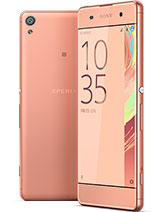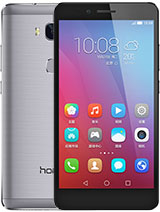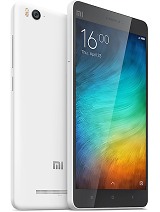Smartphone buyer's guide: April 2016
April 2016

€200-€300
In this price bracket, we found some awesome 5.5-inchers. Although the choice of high-end 5-inchers was limited, we managed to find some worthwhile upgrades over the €100-€200 range.
We kick off with a pair of rivals from Meizu and Xiaomi. The Meizu MX5 sounds like a dream - metal body, 5.5" AMOLED screen, 20.7MP camera with a large 1/2.3" sensor and 2160p video capture, a fingerprint reader, the works.
It does have some flaws though. The immediately obvious one is the lack of a microSD slot and while there is a 64GB version, it can be hard to find (leaving you with just 16GB and 32GB). You could switch to 1080p videos to save on storage, but they have noticeably worse quality than the 2160p videos (which are great). The battery life isn't spectacular either.
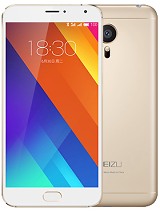
Meizu MX5 | Pros | Cons |
|
|
|
| Review |
While the Meizu MX5 is an outgoing flagship (the MX6 should arrive soon), the Xiaomi Redmi Note 3 landed half a year later as a super midranger.
It too has a metal body and a 5.5" screen (IPS), plus a fingerprint sensor. There are two versions - one with a Snapdragon 650 chipset and another one with MediaTek Helio X10. While both appear similar, they are actually quite different - the Snapdragon one has a microSD slot (where SIM2 goes) and the chipset itself is generally faster.
Compared to the Meizu, the Redmi Note 3 camera isn't as impressive - 13MP and 1080p - but the 4,000mAh battery will go a longer distance.
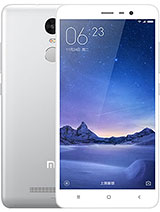
| Pros | Cons |
|
|
|
| Review |
Motorola launched the Moto X Play to compete in the 5.5" 1080p segment. The phone impresses with a 21MP camera with a big 1/2.4" sensor and water repellent nano coating (IP52), plus a clean Android 6.0 Marshmallow and solid battery life.
The chipset is a bit of a letdown though - the Snapdragon 615 is not very competitive in the GPU department (the octa-core CPU has a low clock speed too) and it can't record 2160p videos.
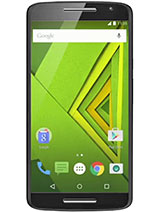
| Pros | Cons |
|
|
|
| Review |
As you can see, at these price latitudes you either get an older flagship or a new midranger, but often the former king still has an edge over the whippersnappers. So, here are a couple of old-but-gold handsets.
The Samsung Galaxy Note 3 boasts a 5.7" Super AMOLED screen (1080p) with the S Pen stylus, which is pressure sensitive for a more natural writing experience. The camera may be an older 13MP shooter, but it does 2160p and 1080p @ 60fps. Plus, this was from the power-user days when you got a microSD slot and a removable battery.
The chipset is old, a Snapdragon 800, which compares well to the new 600s, especially in GPU tests. The software is a bigger worry though - it's on Android 5.0 Lollipop and will probably stay there (there's always the custom ROM path, though).

Samsung Galaxy Note 3 | Pros | Cons |
|
|
|
| Review |
The LG G3 was the phone positioned against the Note 3. It has a 5.5" screen of QHD resolution (back in 2014 it was mightily impressive) and its 13MP/2160p camera has optical image stabilization. The G3 is a compact phone too, barely bigger than some 5" phones.
The screen contrast and sunlight legibility left something to be desired, but battery life was okay, the video camera does very well and you get a slightly newer chipset (Snapdragon 801) and an Android 6.0 Marshmallow upgrade.
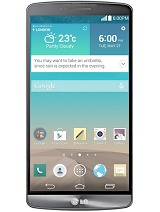
LG G3 | Pros | Cons |
|
|
|
| Review |
We come back down the size scale to the 5.2" LG Nexus 5X. A refreshed version of a well-loved phone, the 5X adds a fingerprint reader for that sweet Android Pay integration and improves the poor battery life of the 5.
The camera is something special too - a 12.3MP resolution on a large 1/2.3" sensor makes for amazing low-light performance for stills and 2160p videos. You do lose the OIS from the older model (but gain Laser AF), the wireless charging is gone as well.

LG Nexus 5X | Pros | Cons |
|
|
|
| Review |
The Samsung Galaxy S5 was when Samsung tried to make water resistance (IP67) and microUSB 3.0 standard features. While the port switch fizzled out, water resistance is back big time with the S7 generation.
The Galaxy S5 has a very capable 16MP camera (the first to offer phase-detection AF on a phone) with 2160p video. Despite the waterproofing, you can still access the battery and you get a microSD slot. Right on time for this guide, Samsung started releasing the Android 6.0 Marshmallow update, making this phone even more appealing.

Samsung Galaxy S5 | Pros | Cons |
|
|
|
| Review |
Sony released the Xperia Z3+ as a supposed upgrade over the Z3, but the more we looked at it, the more it felt like a downgrade. Sure, the jump to Snapdragon 810 is an important upgrade over the S801 in the Xperia Z3, but not that important.
And here's what you lose - battery life (85h Endurance for the Z3, 64h for the Z3+), the stereo speakers don't sound as good, the plus version is pricier, the screen on the Z3+ is ever so slightly worse... There's a reason why Sony, the smartphone maker, is struggling.
The Sony Xperia Z3 is a beautiful device though, a metal frame sandwiched between two panes of toughened glass, an IP68 water resistance rating, stereo speakers, great battery life, a 20.7MP camera with a large 1/2.3" sensor, 2160p video capture, there's a lot to love.

Sony Xperia Z3 | Pros | Cons |
|
|
|
| Review |
And at the very top of the €200-€300 range is a fan-favorite mini-edition, the Sony Xperia Z3 Compact. The 4.6" 720p screen is wrapped in a water-resistant body (IP68) and offers perks like stereo speakers and amazing battery life. Unlike the Galaxy S5, the Z3 Compact is getting Android 6.0 Marshmallow.
This phone carries the full Z3 camera - a large (1/2.3") sensor with 20.7MP resolution and 2160p video capture. Who said small phones have poor specs?
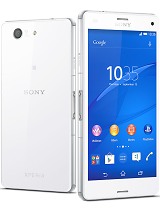
Sony Xperia Z3 Compact | Pros | Cons |
|
|
|
| Review |
€200-€300 phones we skipped and why
What of the Sony Xperia XA, Sony did say the X-series will replace the Zs. The thing is, with Sony's usual premium pricing the mid-range XA costs as much as a Z3. And you're only getting a 5" 720p screen, a mid-range chipset, a lower-spec'd 13MP/1080p camera, smaller battery, no stereo speakers, no water resistance... All in all, the Xperia XA is hardly a great deal.
A better option is the Samsung Galaxy S5 Neo. It features the same screen and same waterproofing, plus a 16MP camera with a brighter aperture (f/1.9), but it can't record 2160p video. Coming over a year later than the S5, the Neo version stands a better chance of getting a software update. So it depends on pricing - at the same price get the S5, if the S5 Neo is discounted then it's a viable option.
The Lenovo Vibe X3 is an interesting offering in the 5.5" 1080p range. It has stereo speakers and a 21MP/2160p camera, a fingerprint reader, plus a microSD slot that was missing on the Meizu MX5. If you're okay with the plastic body, then the Vibe X3 makes a solid alternative to the storage-strapped MX5.
The Huawei Honor 5X appears similar to the Meizu MX5 and Xiaomi Redmi Note 3 - metal body, 5.5" 1080p screen, fingerprint reader, quad-core processor. The chipset is slower (the GPU especially) and you get a regular 13MP/1080p camera.
The Xiaomi Mi 4c would seem like a solid 5" phone, but it's powered by the same chipset as the Nexus 5X (without the fresh OS) and it doesn't have a microSD slot either. The camera is no match and while the battery is bigger, the battery life isn't any better.
The Xiaomi Mi 4i has better battery life (67h Endurance), but a weaker chipset.
Reader comments
- ithehappy
- 27 Sep 2016
- X%D
Time to update this segment guys. Its almost October, and we need a new, refreshed guide.
- AnonD-541790
- 27 May 2016
- Hkt
If you love speed...... Get an iPhone.
- AnonD-541790
- 26 May 2016
- Hkt
If you love speed...... Get an iPhone.
